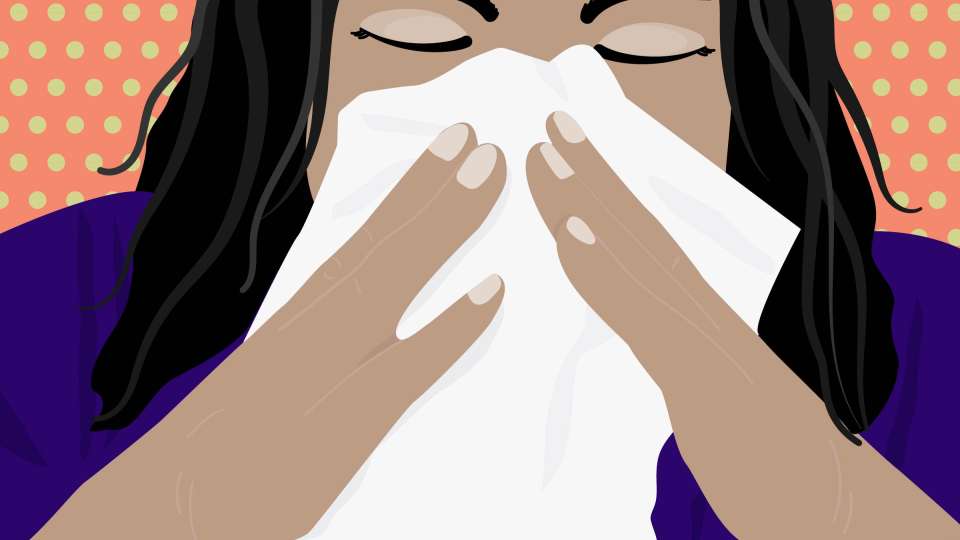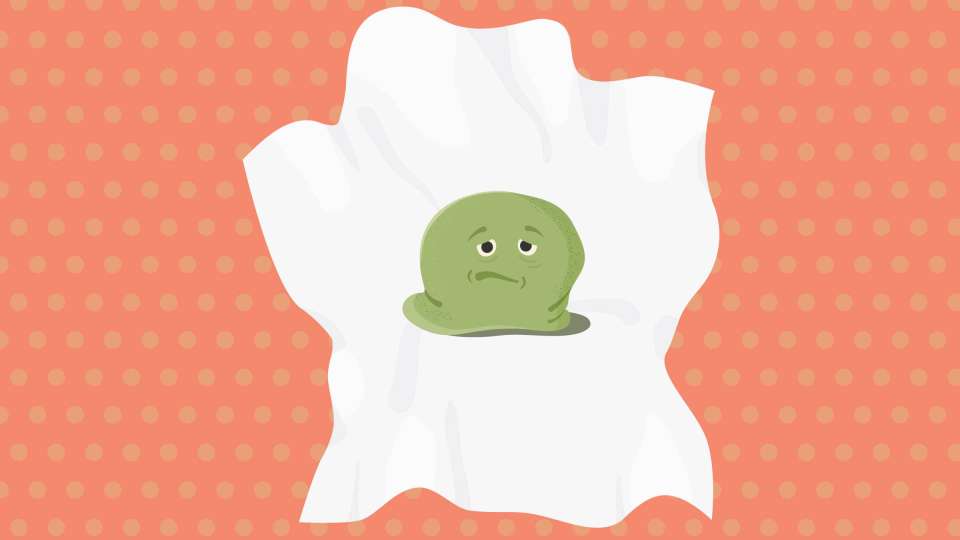
Life is full of colorful things, but it feels a little strange when those colors are coming from inside our nose.
Most people produce a healthy amount of snot every day — around 1.5 quarts of it, some of which is secreted by our mouth and throat, and some of which comes from the nose. Our mucus, albeit a nuisance, is a necessary function, as it lines and protects our nose and sinuses.
“Green or yellow snot may indicate an infection, and clear snot may be related to an allergy,” says Dr. Aria Jafari, a rhinologist and otolaryngologist (ENT) at UW Medical Center - Montlake.
So what does it mean when you blow your nose and the tissue looks like a paint splatter? The color might just say everything you need to know.
What does yellow snot mean?
Among one of the most familiar snot colors is yellow-colored mucus. It’s typically a sign that your body has a virus taking hold. However, it’s not all bad. The yellow mucus is also an indicator that your body is doing its job in fighting the illness. The white blood cells do the bulk of the work, and when they are discarded in the snot, it gives it the familiar yellow or brownish tint.
While it’s not a cause for worry, keep track of when it started. This will help you determine how far along your body is in the healing process. If your body hasn’t flushed it out in around 10 days, Jafari recommends that it’s time to see the doctor.
What does green snot mean?
When your snot is green, it means your body is working overtime to get rid of the probable infection, and in turn, snot will appear thick and green from waste products and dead white blood cells.
The main difference between yellow and green snot lies in the amount of white blood cells and added cellular debris that can cause the green tint. There’s much more of these elements present in green snot, which means your body might be struggling a bit harder to get the infection out of your system and may need reinforcements.
Green snot can also be a sign of a sinus infection, which is often paired with congestion and sinus pressure or headaches in addition to the nasal discharge.
If you’ve been feeling sick for more than 10 days, and the green mucus is paired with a lasting headache, fever or other symptoms, or if you start to feel better, then feel worse again, it may be a good time to let your doctor know.
What does red snot mean?
Red snot might seem concerning, but it may not be the fire alarm it appears to be. Jafari notes that pink or red snot is likely due to the presence of blood. Think of it as a pesky teaser of a nosebleed — blood can appear from over-blowing your nose, nicking the inside from picking your nose (we all do it, it’s OK) or even the increase of blood volume, hormones or swollen nasal passages due to pregnancy.
Before you schedule an appointment with your doctor, try blowing your nose more gently or applying a small amount of lubricant like saline gel to the inside of your nasal cavity to add some much-needed moisture. It’s also good practice to try avoiding touching in and around your nose; keeping our hands away gives us a better chance of not catching any bugs or irritating our skin.
If the red snot is paired with excessive nosebleeds or difficulty breathing, it’s time to visit the doctor.
What does black snot mean?
Black snot might be a sign of a potentially serious fungal infection. There are a few different types of fungal infections that could affect the sinuses, which would require medication or at times, surgery, to heal. While more serious, these types of infection are incredibly rare, and tend to affect people who have certain conditions, such as diabetes or weakened immune systems.
Other, more common causes of black snot include the use of illicit drugs or smoking. Old, dried blood can also appear black. Additionally, living in a polluted city can impact the color of the mucus, presenting another common culprit of gray or black snot, but this wouldn’t require a trip to the doctor.
Why is it important to track the color of your snot?
While snot color itself isn’t life-threatening, paying attention to the color and consistency can help you understand your overall health. If you’re frequently finding yourself with colored snot or getting sick often, it might be time to chat with your doctor about why that may happen.
“There are a lot of types of runny noses,” says Jafari. “Being able to describe it accurately to the treating physician can help with the subsequent treatment. Many of the available treatments are effective, but only if you get the diagnosis right.”
Going to the doctor could also help you feel better faster — which is the most important takeaway of all. So don’t be shy: Once you get over the initial “ew” factor, snap a pic, record the date and, if needed, notify your doctor.

 Healthy ideas for your inbox
Healthy ideas for your inbox









